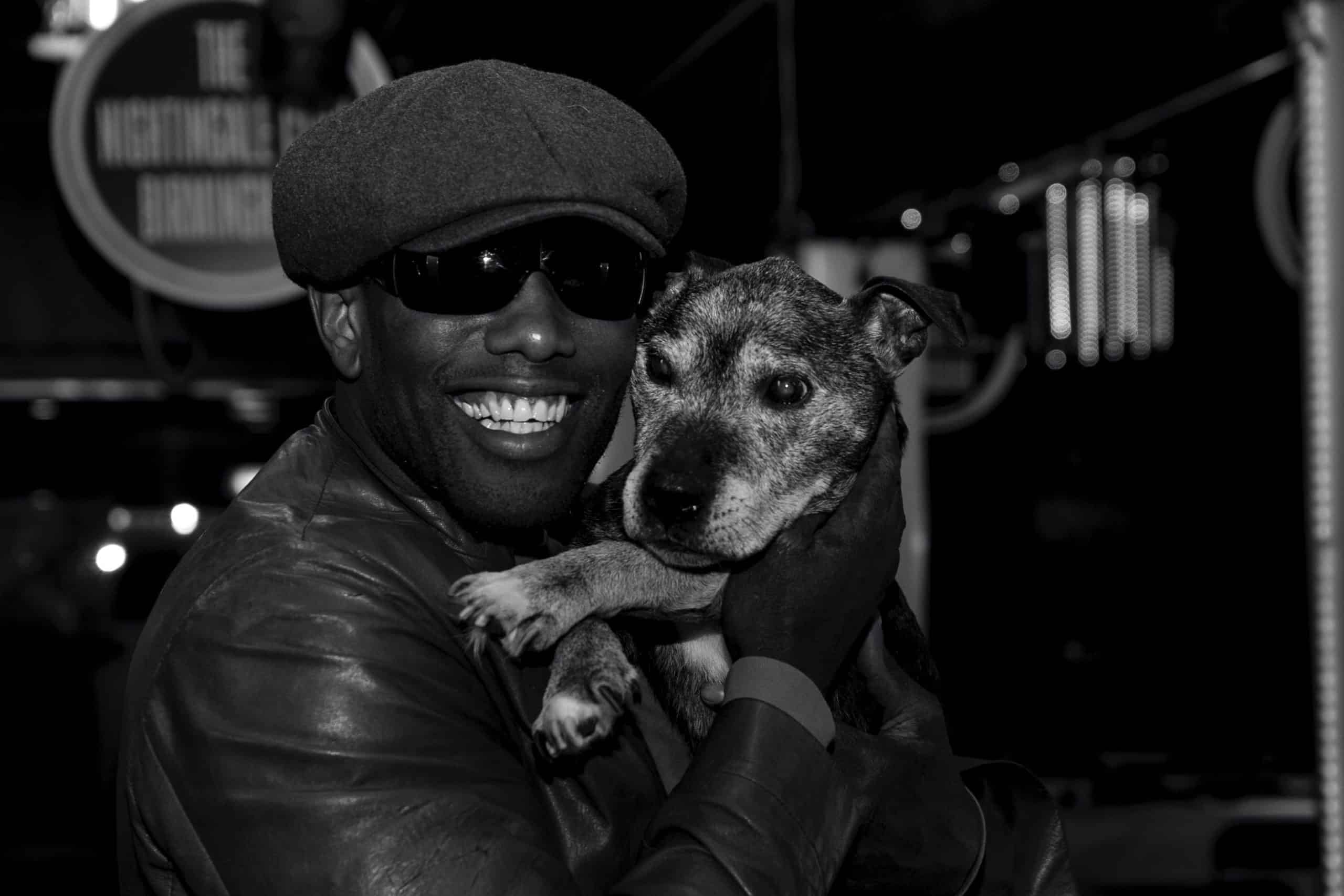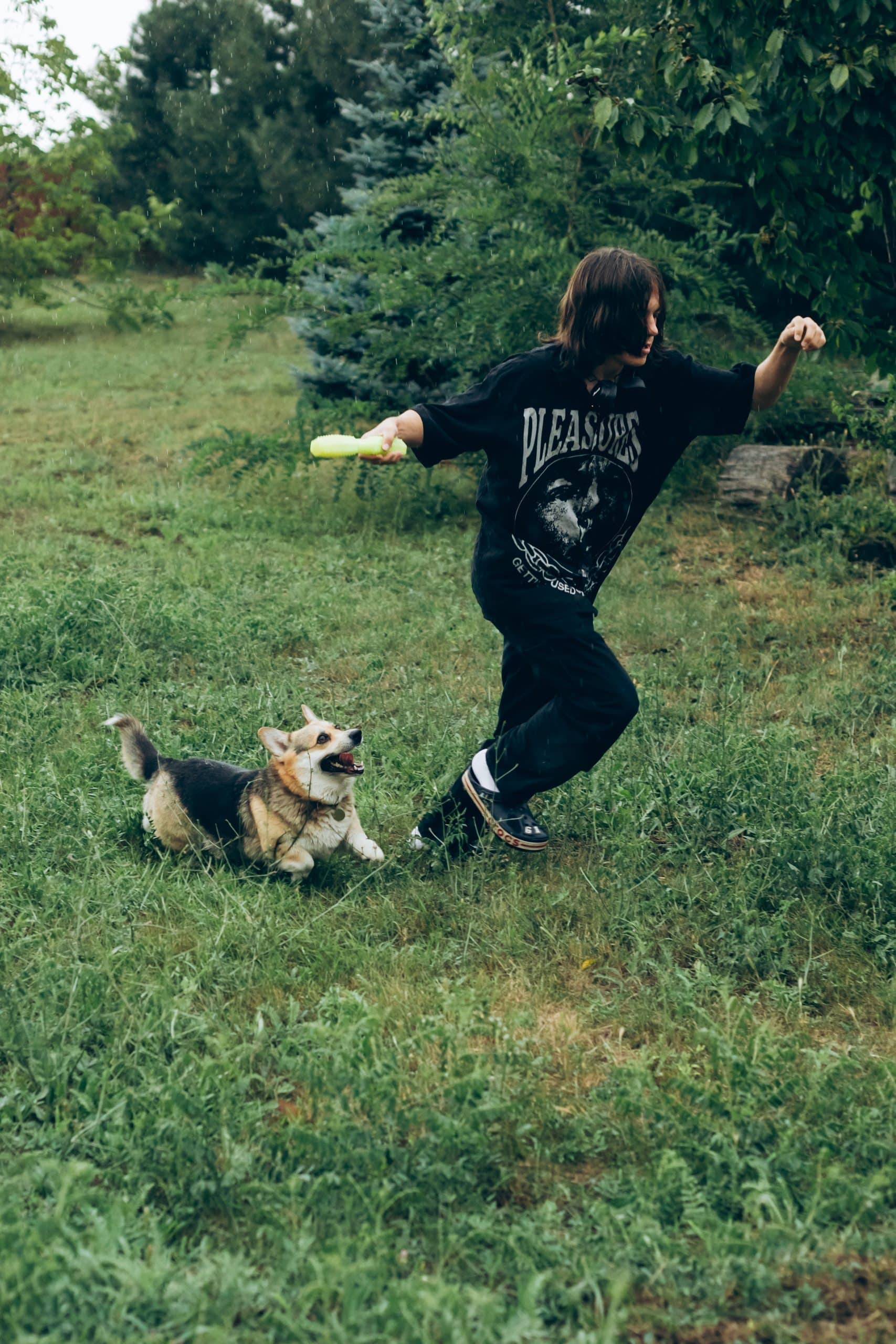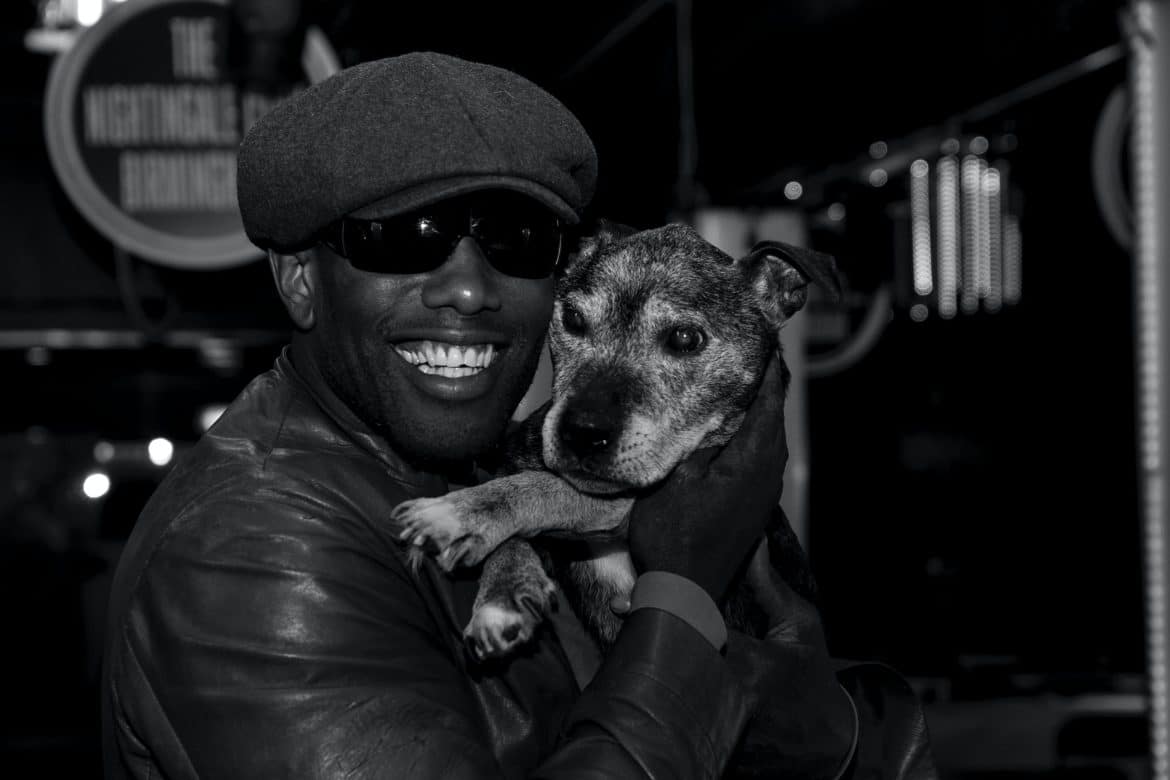Imagine you and your furry friend embarking on an incredible journey together: mastering advanced obedience training. This article explores the challenges you may encounter along the way and celebrates the rewarding moments that await you. From teaching your dog complex commands to overcoming obstacles with love and patience, this guide will equip you with the tools and knowledge needed to navigate the world of advanced obedience training for dogs. Get ready for a rewarding and fulfilling experience that will strengthen your bond with your canine companion like never before.
Understanding Advanced Obedience Training
Exploring the Purpose of Advanced Obedience Training
Advanced obedience training is a crucial step for dog owners who want to take their canine companions' training to the next level. While basic obedience training focuses on teaching fundamental commands like sit, stay, and come, advanced obedience training delves deeper into refining these commands and introducing complex commands and sequences. The purpose of advanced obedience training is to enhance a dog's skills, improve their behavior, and cultivate a stronger bond between the dog and their owner.
The Importance of Advanced Obedience Training for Dogs
Advanced obedience training is not only beneficial for the dog, but also for the owner. Dogs that have undergone advanced obedience training exhibit better behavior, increased focus, and improved impulse control. This level of training instills discipline, confidence, and responsiveness in dogs, enabling them to navigate various situations with ease. Moreover, advanced obedience training provides mental stimulation for dogs, keeping their minds sharp and active. Overall, advanced obedience training is essential for creating a well-behaved and well-rounded dog.
Differentiating Advanced Obedience Training from Basic Obedience Training
While basic obedience training forms the foundation for a dog's training, advanced obedience training builds upon these basics and takes them to a higher level. Basic obedience training focuses on teaching essential commands and ensuring the dog's compliance, while advanced obedience training refines these commands with greater precision and introduces more complex tasks. Advanced obedience training also emphasizes off-leash control, distance and duration, and the use of hand signals and verbal cues. It requires a higher level of focus, impulse control, and understanding from both the dog and the owner.
Common Challenges in Advanced Obedience Training
Identifying Potential Challenges in Advanced Obedience Training
Advanced obedience training can present various challenges for both dog and owner. Some common challenges include maintaining focus amidst distractions, addressing behavioral problems, and overcoming training plateaus. It is crucial to identify these potential challenges in order to address them effectively and ensure a successful training experience.
Addressing Issues of Distraction and Focus
One of the main challenges in advancing obedience training is teaching dogs to maintain focus and obedience in the face of distractions. Dogs are naturally curious creatures and can easily become distracted by sights, sounds, and smells in the environment. To overcome this challenge, it is important to gradually introduce distractions during training sessions, starting with mild distractions and gradually increasing the level of difficulty. By doing so, dogs learn to stay focused on their owner's commands regardless of the distractions around them.
Dealing with Behavioral Problems
During advanced obedience training, it is not uncommon for behavioral problems to arise. These can include leash pulling, jumping, aggression, or excessive barking. It is essential to address these behavioral problems early on to ensure a harmonious training experience. Implementing corrective training techniques, such as positive reinforcement and redirecting unwanted behaviors, can help modify and eliminate these issues. Seeking guidance from professional trainers or behaviorists can provide invaluable support in addressing more complex behavioral challenges.
Overcoming Training Plateaus
Training plateaus can be frustrating for both the dog and the owner. It is important to identify the signs of a training plateau, such as the dog's inability to progress or lack of motivation. To overcome training plateaus, it is necessary to modify training approaches, add variety to training sessions, and introduce advanced training tools that can challenge and engage the dog. Keeping training sessions fun, rewarding, and unpredictable can help reignite the dog's enthusiasm and break through the plateau.

This image is property of images.pexels.com.
Developing a Training Plan
Setting Clear Goals and Objectives
Before embarking on advanced obedience training, it is essential to set clear goals and objectives. Clearly defining the desired outcomes helps keep the training focused and provides a roadmap for both the owner and the dog. Whether the goal is to compete in obedience trials or simply have a well-behaved pet, setting expectations ensures that the training plan is tailored to meet those specific goals.
Understanding the Training Process
Understanding the training process is crucial for effective advanced obedience training. Dogs learn through repetition, consistency, and positive reinforcement. It is important to break down complex commands or behaviors into smaller, manageable steps, allowing the dog to grasp each component before moving on to the next. Consistency in training methods, cues, and expectations creates a clear understanding for the dog, making their training experience more structured and successful.
Creating a Reward System
A reward system is a powerful tool in advanced obedience training. Dogs thrive on positive reinforcement, and using rewards such as treats, praise, and playtime motivates them to cooperate and excel in their training. It is important to find the right balance in using rewards to ensure that the dog remains engaged and eager to learn. Gradually reducing the frequency of rewards as the dog becomes proficient in the commands is essential for developing long-term obedience and reliability.
Establishing Consistent Training Methods
Consistency is key in advanced obedience training. Establishing consistent training methods, including verbal cues, hand signals, and body language, creates clear communication between the owner and the dog. Using consistent training methods ensures that the dog understands the expectations and is more likely to respond reliably to commands. Consistency also extends to the training environment, ensuring that the dog can generalize their training to different locations and situations.
Using Positive Reinforcement
Positive reinforcement is a fundamental aspect of advanced obedience training. It involves rewarding desirable behaviors and ignoring or redirecting unwanted behaviors. Positive reinforcement creates a positive association with training, making the learning experience enjoyable for the dog. By praising and rewarding the dog for correct responses, they are encouraged to repeat those behaviors. This positive approach fosters a stronger bond between the dog and the owner and establishes a foundation built on trust and cooperation.
Building a Strong Foundation
Reviewing and Reinforcing Basic Obedience Commands
Before diving into advanced obedience training, it is important to review and reinforce the basic obedience commands. Basic commands such as sit, stay, and come form the foundation of obedience training and serve as building blocks for more complex commands. By ensuring that the dog is proficient in these basic commands, they are better equipped to understand and respond to the advanced commands that will be introduced.
Improving Impulse Control
Impulse control is a crucial aspect of advanced obedience training. Dogs need to learn how to resist impulsive behaviors, such as jumping on people or lunging towards distractions. Teaching impulse control involves exercises such as "wait" or "leave it," where the dog learns to control their impulses and wait for permission before engaging in certain behaviors. By improving their impulse control, dogs develop better self-discipline and are able to make better choices in various situations.
Enhancing Boundary Training
Boundary training involves teaching the dog to respect certain boundaries or limitations. This can include staying within a designated area, not jumping on furniture, or waiting at doorways until given permission to enter or exit. Boundary training establishes clear expectations for the dog and helps them understand their boundaries in different environments. By enhancing boundary training, dog owners can ensure safety, prevent unwanted behaviors, and create a more controlled and enjoyable living space for both dog and owner.
Strengthening Leash Skills
Leash skills are essential for advanced obedience training, as they provide control and ensure the dog's safety in public settings. Strengthening leash skills involves teaching the dog to walk politely on a leash without pulling, to maintain a loose leash when walking, and to respond reliably to leash cues such as "heel" or "close." By improving leash skills, dog owners can enjoy more pleasant and relaxed walks with their dogs, promoting a positive experience for both parties.

This image is property of images.pexels.com.
Advanced Command Training
Teaching Complex Commands and Sequences
Advanced command training involves introducing complex commands and sequences to challenge the dog's understanding and response. This can include commands like "fetch," "roll over," or even more advanced tricks and tasks. Teaching complex commands requires breaking them down into smaller steps, using positive reinforcement, and gradually increasing the level of difficulty. With patience and persistence, dogs can learn to perform impressive and intricate commands with precision.
Introducing Distance and Duration
Building on the foundation of basic obedience commands, advanced obedience training requires dogs to maintain their commands over longer distances and durations. This involves gradually increasing the distance between the dog and the owner while still expecting compliance. Similarly, the duration of commands, such as a "stay" or "down," is extended to further challenge the dog's focus and self-control. By introducing distance and duration, dogs learn to generalize their commands and follow through in different scenarios.
Mastering Off-Leash Control
A significant achievement in advanced obedience training is mastering off-leash control. This requires a high degree of trust, reliability, and training consistency between the dog and the owner. Off-leash control enables dogs to have more freedom while still maintaining obedience and responsiveness. It is crucial to gradually transition from on-leash training to off-leash training in controlled environments to ensure safety and reliability. With consistent practice and reinforcement, dogs can become well-rounded and obedient off-leash companions.
Working with Hand Signals and Verbal Cues
To enhance communication with their owners, dogs can be trained to respond to both hand signals and verbal cues. This adds another layer of understanding and engagement in advanced obedience training. Hand signals are particularly useful in situations where verbal commands may not be easily heard or understood, such as in noisy environments or at a distance. By working with hand signals and verbal cues in tandem, owners can provide clearer guidance and ensure better responsiveness from their dogs.
Addressing Distractions
Gradually Introducing Distractions into Training
Training dogs to remain focused and obedient amidst distractions is a vital aspect of advanced obedience training. Rather than avoiding distractions, it is important to gradually introduce them during training sessions. Start with mild distractions, such as low-level noises or gentle movements, and gradually increase the challenge to include more tempting or distracting stimuli. By exposing dogs to controlled distractions, they learn to maintain their focus and obedience regardless of the environment.
Using Distraction as Part of Training
Incorporating distractions into training sessions can actually be beneficial in reinforcing obedience and impulse control. Using distraction as part of training involves intentionally exposing the dog to tempting or challenging situations while reinforcing the desired behaviors. For example, practicing "stay" or "leave it" commands in the presence of food or toys can teach dogs to resist the urge to snatch or react. This technique helps develop the dog's ability to make good choices and demonstrate self-control, even in the presence of distractions.
Managing and Redirecting Reactive Behavior
During advanced obedience training, dog owners may encounter reactive behavior, such as excessive barking or lunging towards other dogs or people. It is crucial to manage and redirect these reactive behaviors in a positive and controlled manner. Techniques such as desensitization and counterconditioning can help modify reactive behavior by gradually exposing the dog to the trigger in a controlled and positive way. Seeking guidance from professional trainers or behaviorists can provide additional support in managing and addressing reactive behavior effectively.

This image is property of images.pexels.com.
Managing Behavioral Challenges
Understanding the Root Causes of Behavioral Challenges
Behavioral challenges can arise during advanced obedience training and can vary in their severity and complexity. It is important to understand the underlying causes of these challenges in order to address them effectively. Behavioral challenges can be rooted in fear, anxiety, territoriality, previous negative experiences, or a lack of socialization. By identifying the root causes, owners can implement appropriate corrective training techniques and strategies to modify and improve the dog's behavior.
Implementing Corrective Training Techniques
Corrective training techniques are essential in managing and modifying behavioral challenges. These techniques focus on redirecting unwanted behavior, reinforcing desirable behavior, and setting clear boundaries. Techniques such as positive reinforcement, negative punishment (e.g., time-outs), and desensitization can help correct and shape behavior effectively. It is important to ensure that corrective training techniques are used in a humane and positive manner, avoiding the use of aversive or harsh methods that can damage the dog's trust and emotional well-being.
Seeking Help from Professional Trainers or Behaviorists
For more complex or persistent behavioral challenges, seeking help from professional trainers or behaviorists is highly recommended. These experts have extensive knowledge and experience in addressing behavioral issues and can provide personalized guidance and support. Professional trainers or behaviorists can assess the specific challenges, tailor training plans, and provide ongoing assistance to ensure progress and success. They can also offer additional resources and techniques to tackle specific behavioral challenges effectively.
Implementing Desensitization and Counterconditioning
Desensitization and counterconditioning are powerful techniques used to modify reactive or fearful behavior in dogs. Desensitization involves gradually exposing the dog to the trigger at a low intensity, allowing them to become more comfortable and desensitized to the stimulus over time. Counterconditioning simultaneously replaces the dog's negative emotional response with a positive one, associating the trigger with a pleasant experience or reward. By implementing desensitization and counterconditioning techniques, dog owners can help their dogs overcome behavioral challenges and develop more positive and appropriate reactions.
Handling Training Plateaus
Identifying Signs of Training Plateaus
Training plateaus can occur during advanced obedience training, where the dog's progress seems to stall or plateau. It is important to identify the signs of a training plateau to prevent frustration and seek strategies to overcome it. Signs of a training plateau may include the dog's lack of enthusiasm or motivation, the inability to progress to the next level of command difficulty, or the lack of generalization of learned commands to different environments. By recognizing these signs, owners can adjust their training approach and inject new strategies to break through the plateau.
Modifying Training Approaches
To overcome training plateaus, it is necessary to modify training approaches to keep the dog engaged and motivated. This can be done by introducing new challenges, changing training environments, varying training techniques, or increasing the level of difficulty gradually. Adding variety to training sessions keeps the dog mentally stimulated and prevents boredom, which can often contribute to a training plateau. By modifying and adapting training approaches, owners can reignite the dog's interest and boost progression.
Adding Variety to Training Sessions
Injecting variety into training sessions is a powerful way to keep the dog engaged and motivated. Dogs thrive on novelty and enjoy the challenge of learning new tasks or commands. Adding variety can include incorporating different training exercises, changing training locations, utilizing different training tools, or introducing new commands or tricks. By continuously adding variety, training sessions remain interesting and enjoyable for the dog, turning the training process into an enriching and rewarding experience.
Using Advanced Training Tools
In advanced obedience training, the use of advanced training tools can be beneficial in achieving progress and overcoming training plateaus. Tools such as clickers, target sticks, or scent detection equipment can add new dimensions to training exercises and enhance the communication between the owner and the dog. When used correctly and responsibly, advanced training tools can provide additional cues and reinforcement, aiding in the dog's understanding of complex commands and behaviors. It is important to seek guidance from professional trainers to ensure proper and effective use of advanced training tools.
Rewarding and Celebrating Progress
Using Reinforcement and Praise Effectively
Effective use of reinforcement and praise is crucial in advanced obedience training. Reinforcement can take various forms, including treats, verbal praise, physical affection, or playtime. It is important to understand what is most rewarding for the individual dog and use it as a reinforcement tool during training sessions. Praise should be timely, specific, and genuine, highlighting the dog's accomplishments and effort. By using reinforcement and praise effectively, dog owners can create positive associations with training and motivate their dogs to excel.
Recognizing and Celebrating Achievements
Recognizing and celebrating achievements along the training journey is essential in maintaining motivation and fostering a positive training atmosphere. When the dog achieves a milestone or masters a challenging command, it is important to acknowledge their effort and success. Celebrating achievements can involve verbal acknowledgment, extra playtime, special treats, or engaging in fun activities that the dog enjoys. By recognizing and celebrating achievements, the dog builds confidence, the owner feels a sense of accomplishment, and the bond between them strengthens.
Creating a Positive Training Atmosphere
Creating a positive training atmosphere is crucial for successful advanced obedience training. Dogs are sensitive to their environment and can pick up on the mood and energy of their owners. Training sessions should be conducted in a calm and positive atmosphere, free from external distractions or stressors. It is important for the owner to maintain a friendly and upbeat tone, fostering an environment of trust, encouragement, and enjoyment. By creating a positive training atmosphere, the dog feels comfortable and motivated to participate fully in the training process.
Finding Joy in the Training Process
Finding joy in the training process is fundamental for both the dog and the owner. Advanced obedience training provides an opportunity for the dog and the owner to bond, communicate effectively, and work towards common goals. It is important to approach training sessions with a positive mindset, embracing the challenges and celebrating small victories. By finding joy in the training process, both the dog and the owner will have a more enriching and rewarding experience, strengthening their relationship and deepening their connection.
Overcoming Frustration and Maintaining Patience
Accepting the Time and Effort Required for Advanced Obedience Training
Advanced obedience training requires time, effort, and dedication from both the dog and the owner. It is important to accept that progress may not happen overnight and that each dog learns at their own pace. Frustration is a natural human response when faced with challenges, but it is crucial to maintain patience and remember that training is a journey. By accepting the time and effort required, the owner can approach training with a positive mindset and enjoy the process of growth and improvement.
Practicing Self-Control and Emotional Regulation
Maintaining self-control and emotional regulation is paramount during advanced obedience training. Dogs are sensitive to their owners' emotions and can pick up on frustration or impatience. It is essential for the owner to remain calm, composed, and patient, even when faced with challenges or setbacks. Practicing self-control and emotional regulation sets a positive example for the dog, fostering a harmonious training environment and ensuring effective communication.
Utilizing Relaxation Techniques
Training sessions can sometimes be stressful for both the dog and the owner. Utilizing relaxation techniques before and during training can help reduce stress and promote a calm mindset. Techniques such as deep breathing, visualization, or mindfulness exercises can help owners relax and maintain a positive demeanor. Dogs also benefit from relaxation techniques, such as incorporating short breaks for stretching or practicing calming exercises like "settle" or "relax." By incorporating relaxation techniques, both the dog and the owner can approach training sessions with a clear and focused mind.
Seeking Support from Other Dog Owners or Training Communities
Seeking support from other dog owners or training communities can provide valuable guidance, perspective, and encouragement during advanced obedience training. Connecting with like-minded individuals who share similar training goals can offer a sense of community and support. Online forums, training classes, or local dog clubs can provide opportunities to learn from others' experiences, share knowledge, and find encouragement during challenging times. By seeking support, the owner can draw upon collective wisdom and find solace in knowing they are not alone in their training journey.
In conclusion, advanced obedience training plays a vital role in developing a well-behaved and well-rounded dog. Overcoming challenges, implementing effective training strategies, and maintaining a positive mindset are essential in achieving success in advanced obedience training. By focusing on building a strong foundation, mastering advanced commands, addressing distractions and behavioral challenges, and celebrating progress, dog owners can forge a stronger bond with their canine companions and create a harmonious and enjoyable training experience. With patience, perseverance, and unwavering dedication, owners can navigate the complexities of advanced obedience training and witness the transformation of their dogs into obedient, confident, and happy companions.


